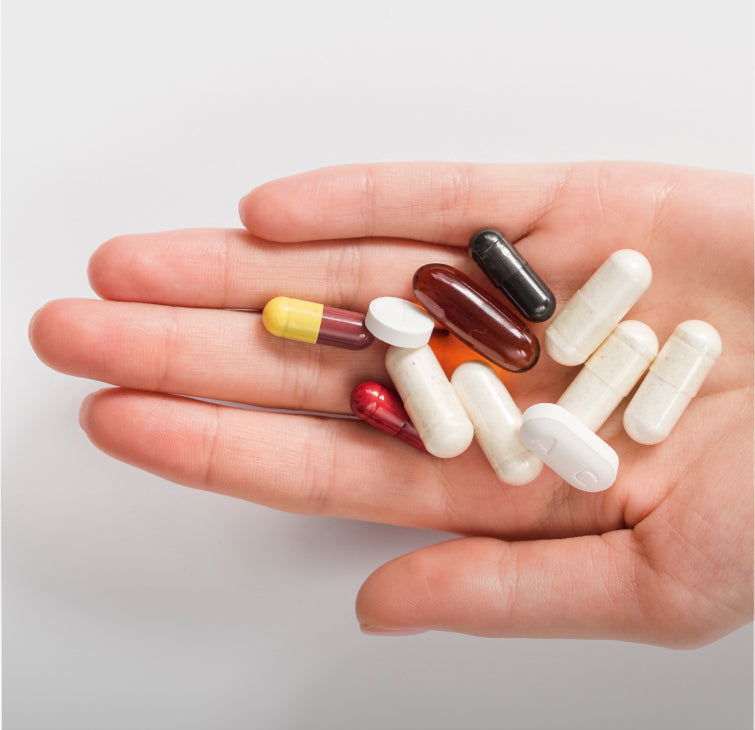Calcium is an essential mineral for children's growth and health . However, more and more young people are deficient in it.
What are the consequences of a calcium deficiency in children ? Diet, food supplements, how can such a risk to their health be prevented?
What is the relationship between calcium and health in young people?
What is the role of calcium in the body?
Calcium (Ca) is one of the essential minerals for good health at all stages of life.
It is even the most present in the human body since it represents up to 1.2 kg of the total mass. This mineral is involved in a large number of essential functions such as the conduction of nerve impulses, muscle contraction, skeletal strength, the release of certain hormones and even blood clotting.
Why is calcium important during growth?
A child's daily calcium needs must be met. Indeed, during this period of life, this mineral is primarily used by the body for bone formation. It is used both for their growth and for their strength.
This skeletal strength is essential to avoid certain pathologies in adulthood. It is in fact during the first 20 years of life that the “bone capital” of each individual is built up.
A calcium deficiency during youth can cause more significant decalcification from the age of 30.
In older people, it leads to an increased risk of bone fragility due to a decrease in bone density (osteoporosis).
Calcium deficiency: increasingly common in children
Calcium (Ca) is a mineral essential to everyone's good health. This is especially true during growth.
However, more and more children are not meeting their daily needs.
What are the calcium needs during growth?
ANSES, the French National Agency for Food Safety, is currently reassessing the daily calcium requirements of young people . The ANC (Recommended Dietary Intakes) are currently:
- 500 mg in infants from 2 years old;
- 700 mg between 4 and 6 years;
- 900 mg between 6 and 9 years;
- 1200 mg between 9 and 19 years old.
These various nutritional references will in all likelihood be revised upwards.
Calcium deficiency in children: a growing health problem
The Research Center for the Study and Observation of Living Conditions (CREDOC) conducted a study on a representative sample of children between 2010 and 2016.
The results of this study highlight that daily calcium intakes are not covered for:
- 20% of children in the 3-5 age group, compared to 4% previously;
- 45% of 6-9 year olds versus 33%;
Diet called into question
The human body is unable to synthesize calcium , so the only possible source is through food.
For a long time, the medical profession and public services have praised the benefits of dairy products that are very rich in Ca. But in recent years, the eating habits of the French have been changing.
Less milk, but also fewer vegetables and many more processed foods on our plates. In fact, the amount of calcium ingested by younger generations tends to be lower than the recommended nutritional intake.
What foods are naturally rich in calcium?
All foods contain calcium. However, some foods have higher concentrations, such as (per 100g):
-
Cheese and dairy products: hard cheeses such as Comté, Emmental, and Gruyère are the richest, with an average content of 1000 mg. Other cheeses also contain between 600 mg and 800 mg, such as Bleu d'Auvergne, Saint-Nectaire, and Reblochon de Savoie.
Milk: This inexpensive food is rich in calcium. Sheep milk is by far the most interesting with 195 mg, far ahead of goat milk (125 mg) or cow milk (120 mg). However, it is the latter that is generally consumed because it has a less powerful taste and is easily available everywhere;
fermented dairy products such as yogurt, fromage blanc or buttermilk (from our Breton friends!) are logically also important sources of calcium; - certain spices such as thyme (1250 mg) or cinnamon (1090 mg);
- canned or fresh sardines : 400 mg. Eating sardines also helps cover a good part of the daily intake of vitamin D and omega 3;
- almonds : 250 mg
- leafy vegetables such as kale or spinach. These contain 168 mg;
- Water : can be an important source of calcium, present in quantities that vary greatly from one source to another. The average content is around 150 ml per liter. Some commercial waters have concentrations up to three times higher: look at the labels. For tap water: consult your municipality's website on this subject, the calcium content of the water should be listed there, (otherwise contact the competent service!). It is important to estimate the daily intake of calcium linked to drinking water.
- All fruits contain calcium . However, some are richer, such as oranges (43 mg), kiwis (34 mg) or mandarins (30 mg).
It is essential to estimate the child's overall daily calcium intake and relate it to the needs of their age (see above). If necessary, do not hesitate to consult a nutrition professional to assess this and make the necessary corrections.
Multi Kid: a specific food supplement for children
In theory, you now know how to provide your child with enough Calcium through their diet, whether it is traditional with dairy products or plant-based.
In practice, you already know how spinach and cabbage might be received. Maintaining this daily balance is not so easy, especially for young children, because their quantitative calcium needs are high, while their appetite often remains low and variable.
This situation corresponds well to what is observed by the CREDOC study: a significant proportion of children lack calcium.
We designed Multi Kid to address these critical situations from a very young age (1 year) . This food supplement is specifically formulated to ensure your child's micronutrients are secure from the age of one until the end of their growth.
Multi Kid contains the most important micronutrients for growth, including calcium, but also vitamin B12 , iodine , vitamins D and E, zinc, etc.
Depending on your age, one to two capsules of the Multi Kid children's food supplement provide 175 to 350 mg of calcium. This is a sufficient amount, alongside a balanced diet, to cover your daily calcium needs. This ensures no risk of deficiency during growth, and strong bones for life.
Bibliography:
 04 74 03 98 80
04 74 03 98 80










